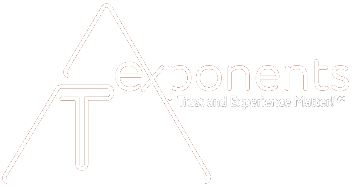Seven Key Snowflake Benefits For Your Business
Snowflake is a cloud computing company founded in 2012, and publicly launched in 2014. Snowflake was built specifically for the cloud, and was designed to address many problems found in older data warehouse systems such as hardware scalability issues, cost, performance issues, etc. Snowflake provides both a cloud-based data storage and analytics service, commonly referred to as "data-as-a-service.".
As you may recall from the prior Snowflake post, the following is a high-level Snowflake implementation architecture.
Snowflake has received much attention in recent years showing up on many Cloud and SaaS Top-50 lists in the past few years. But what is behind this hype? In this article, we discuss some of the top ways Snowflake can benefit your business.
Consumption/Unit-Based Pricing - Snowflake’s pricing model is mostly based on the following two consumption-based metrics: usage of compute and of data storage. From Snowflake’s website: “The charge for compute is based on the number of credits used to run queries or perform a service, such as loading data with Snowpipe. Credits have a pricing rate depending on the edition used: standard, enterprise, or business-critical, each of which comes with a different list of features. Compute cluster usage time or serverless operations have a rate of credits consumed, and all compute charges are billed based on real, rather than predicted or estimated, usage—down to the second. The charge for storage is based on the number of bytes stored per month, as well as the cost of moving data across regions or clouds that is passed on by the cloud vendor. Storage costs benefit from automatic compression of all data stored, and the total compressed file size is used to calculate the storage bill for an account.”
Performance and speed - Because the cloud infrastructure is elastic in nature, it allows you to load data faster and/or run a high volume of queries. Because Snowflake runs on the cloud, you can scale up your virtual warehouse to take advantage of extra compute resources. If you no longer require it or need to reduce costs, you can scale down the virtual warehouse and pay for only the time/computing resources used.
Cloud agnostic - Unlike other cloud data warehouses, Snowflake doesn’t use its own cloud. It runs on Amazon Web Services (AWS) since 2014, Microsoft Azure since 2018, and Google Cloud Platform (GCP) since 2019. Because it uses a common, interchangeable code base, you can move your data to any cloud product and any region/geography, without having to re-do your application code. Snowflake cannot run on a private cloud infrastructure, either on-premises or hosted.
Structured and semi structured data support - Companies can combine structured and semi structured data for analysis and load it into the cloud database without the need for conversion or transformation into a fixed relational DB (RDB) schema first. Snowflake will automatically optimize the method the data is stored and queried.
Seamless data sharing - Snowflake's architecture provides seamless data sharing among Snowflake users. The Snowflake architecture allows data to be shared across Snowflake customers or even non-Snowflake customers (using Reader accounts). Both Snowflake customers and non-Snowflake customer accounts can be created directly from the Snowflake user interface. This functionality allows the provider to create and manage a Snowflake account for a consumer.
Availability and security - Snowflake is distributed across the availability zones for platform on which it operates — AWS, Azure, or GCP — and is designed to operate continuously and tolerate component and network failures with minimal impact to customers. It is SOC 2 Type II certified, and additional levels of security — such as support for PHI data for HIPAA customers, and encryption across all network communications — are available.
Concurrency and accessibility - Snowflake has a unique multi-cluster architecture which addresses concurrency issues. With this approach, queries from one virtual warehouse never affect the queries from another, and each virtual warehouse can scale up or down as required. Business users, data analysts and data scientists can leverage Snowflake without waiting for other loading and processing tasks to complete.
With traditional data warehouses with a large number of users and business user groups, you often experience concurrency issues (such as delays or failures) when too many queries compete for resources.
The purpose of this article is to provide a high-level architecture understanding and to introduce you to key Snowflake concepts.
Learn More
Since its launch in 2014, around half of the Fortune 500 companies and 500 of the Global 2000 companies are using Snowflake so it is definitely something for large-size and mid-size companies to consider.
As we have shown in this article, there are many benefits to using Snowflake. If you would like to discuss migrating to Snowflake or benefits that can be achieved for your company, please click the “Find Out More” button below.
DRIFT IQ LLC DBA T EXPONENTS™ PRIVATE, PROPRIETARY AND CONFIDENTIAL. COPYRIGHT © 2023 T EXPONENTS™. ALL RIGHTS RESERVED.


